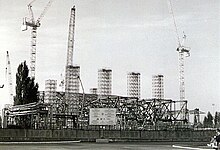ginjawarrior
Well-Known Member
I am not worried about an Extinction event. That was Doer not me.
I also know that the particles are not water soluble.
How much radiation can fish and water mammals take before it is a lethal dose?
lethal as in radiation sickness or long term cancer risks?
i dont know exactly.
im unaware of reports of fish kills presently happening in the harbour area at fukishima (i wouldnt bet on long term cancer risks tho) the storage pools on the otherhand would be on the lethal side
as with all life on earth anything in the sea has to cope with natural radiation level. outside of the immediate area of fukishima its pretty much buisness as usual
| Nuclide | Activity used in calculation | |||
|---|---|---|---|---|
| Pacific | Atlantic | All Oceans | ||
| Uranium | 0.9 pCi/L (33 mBq/L) | 6 x 10[SUP]8[/SUP] Ci (22 EBq) | 3 x 10[SUP]8[/SUP] Ci (11 EBq) | 1.1 x 10[SUP]9[/SUP] Ci (41 EBq) |
| Potassium 40 | 300 pCi/L (11 Bq/L) | 2 x 10[SUP]11[/SUP] Ci (7400 EBq) | 9 x 10[SUP]10[/SUP] Ci (3300 EBq) | 3.8 x 10[SUP]11[/SUP] Ci (14000 EBq) |
| Tritium | 0.016 pCi/L (0.6 mBq/L) | 1 x 10[SUP]7[/SUP] Ci (370 PBq) | 5 x 10[SUP]6[/SUP] Ci (190 PBq) | 2 x 10[SUP]7[/SUP] Ci (740 PBq) |
| Carbon 14 | 0.135 pCi/L (5 mBq/L) | 8 x 10[SUP]7[/SUP] Ci (3 EBq) | 4 x 10[SUP]7[/SUP] Ci (1.5 EBq) | 1.8 x 10[SUP]8[/SUP] Ci (6.7 EBq) |
| Rubidium 87 | 28 pCi/L (1.1 Bq/L) | 1.9 x 10[SUP]10[/SUP] Ci (700 EBq) | 9 x 10[SUP]9[/SUP] Ci (330 EBq) | 3.6 x 10[SUP]10[/SUP] Ci (1300 EBq) |
[TH="colspan: 3"] Ocean [/TH]
http://www.umich.edu/~radinfo/introduction/natural.htm
[h=3][FONT=Arial, Helvetica]Human body[/FONT][/h]You are made up of chemicals, and it should be of no surprise that some of them are radionuclides, many of which you ingest daily in your water and food. Here are the estimated concentrations of radionuclides calculated for a 70,000 gram adult based ICRP 30 data:
| Nuclide |
|---|
| Uranium |
| Thorium |
| Potassium 40 |
| Radium |
| Carbon 14 |
| Tritium |
| Polonium |
[TH="width: 153"] Total Mass of Nuclide
Found in the Body [/TH]
[TH="width: 167"] Total Activity of Nuclide
Found in the Body [/TH]
[TH="width: 113"] Daily Intake of Nuclides [/TH]
[TD="align: center"] 90 �g [/TD]
[TD="align: center"] 30 pCi (1.1 Bq) [/TD]
[TD="align: center"] 1.9 �g [/TD]
[TD="align: center"] 30 �g [/TD]
[TD="align: center"] 3 pCi (0.11 Bq) [/TD]
[TD="align: center"] 3 �g [/TD]
[TD="align: center"] 17 mg [/TD]
[TD="align: center"] 120 nCi (4.4 kBq) [/TD]
[TD="align: center"] 0.39 mg [/TD]
[TD="align: center"] 31 pg [/TD]
[TD="align: center"] 30 pCi (1.1 Bq) [/TD]
[TD="align: center"] 2.3 pg [/TD]
[TD="align: center"] 95 �g [/TD]
[TD="align: center"] 0.4 �Ci (15 kBq) [/TD]
[TD="align: center"] 1.8 �g [/TD]
[TD="align: center"] 0.06 pg [/TD]
[TD="align: center"] 0.6 nCi (23 Bq) [/TD]
[TD="align: center"] 0.003 pg [/TD]
[TD="align: center"] 0.2 pg [/TD]
[TD="align: center"] 1 nCi (37 Bq) [/TD]
[TD="align: center"] ~0.6 �g [/TD]




